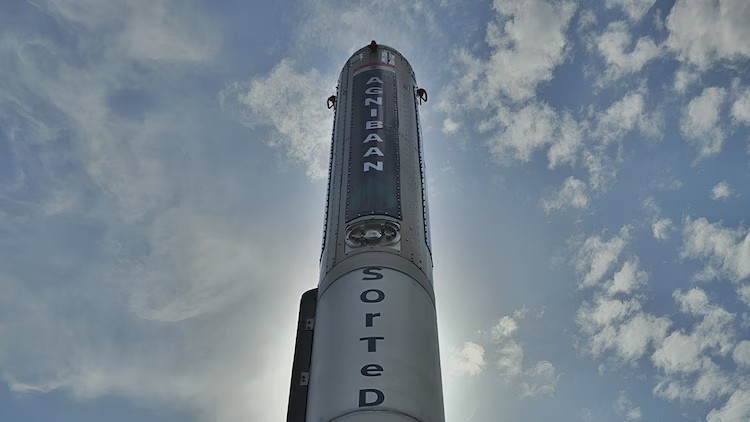
Agnibaan SOrTeD

08.04.2024
Agnibaan SOrTeD
|
For Prelims:About Agnibaan Sub-Orbital Technology Demonstrator (SORTED), Important points,Features of Agniban SORTED |
Why in the news?
According to recent news, the launch of the Agnikul 'Agniban SOrTeD' mission has been postponed for the second time.
Important points:
- The launch of Agnikul 'Agniban SOrTeD' has been postponed. Whose launch was scheduled from Sriharikota.
- Chennai-based space start-up Agnikula Cosmos aborted the maiden launch of its 3D-printed, semi-cryogenic Agniban rocket about 92 seconds before liftoff, citing some technical issues.
- Chennai-based Agnikula Cosmos was to test an Agniban rocket with a 3D-printed engine, aimed at suborbital flight trajectory control.
About Agnibaan Suborbital Technology Demonstrator (SORTED):
- Agnibaan Suborbital Technological Demonstrator (SOrTeD) is a single-stage launch vehicle powered by Agnikul's patented Agnilet engine.
- This is the world's first single piece 3D printed semi-cryogenic rocket engine.
- The Agnilet engine is the world's first single-piece 3D-printed semi-cryogenic rocket engine.
- It will be launched from India's first private launchpad, ALP-01, located inside the Sriharikota Spaceport of the Indian space agency ISRO.
- The SOrTeD mission is a single-stage launch vehicle demonstration that will be powered by a semi-cryogenic engine, Agnilet, a sub-cooled liquid oxygen-based propulsion system developed indigenously.
Features of Agniban SORTED:
- It is India's first vehicle to be equipped with a semi cryogenic engine, Agnilet, an indigenously developed subcooled liquid oxygen-based propulsion system.
- The rocket engine will burn kerosene into liquid oxygen and this can be used directly in the rocket.
- It can lift 14,000 kg and carry a payload of 100 kg to an altitude of 700 km.
- It can reach both low and high inclination orbits and is fully maneuverable.
- It will also have India's first Ethernet-based avionics architecture and completely in-house developed autopilot software.
- To ensure its compatibility with multiple launch ports, Agnikul has designed a launch pedestal called 'Dhanush' that will support the rocket's mobility in all configurations.
Source: India Today